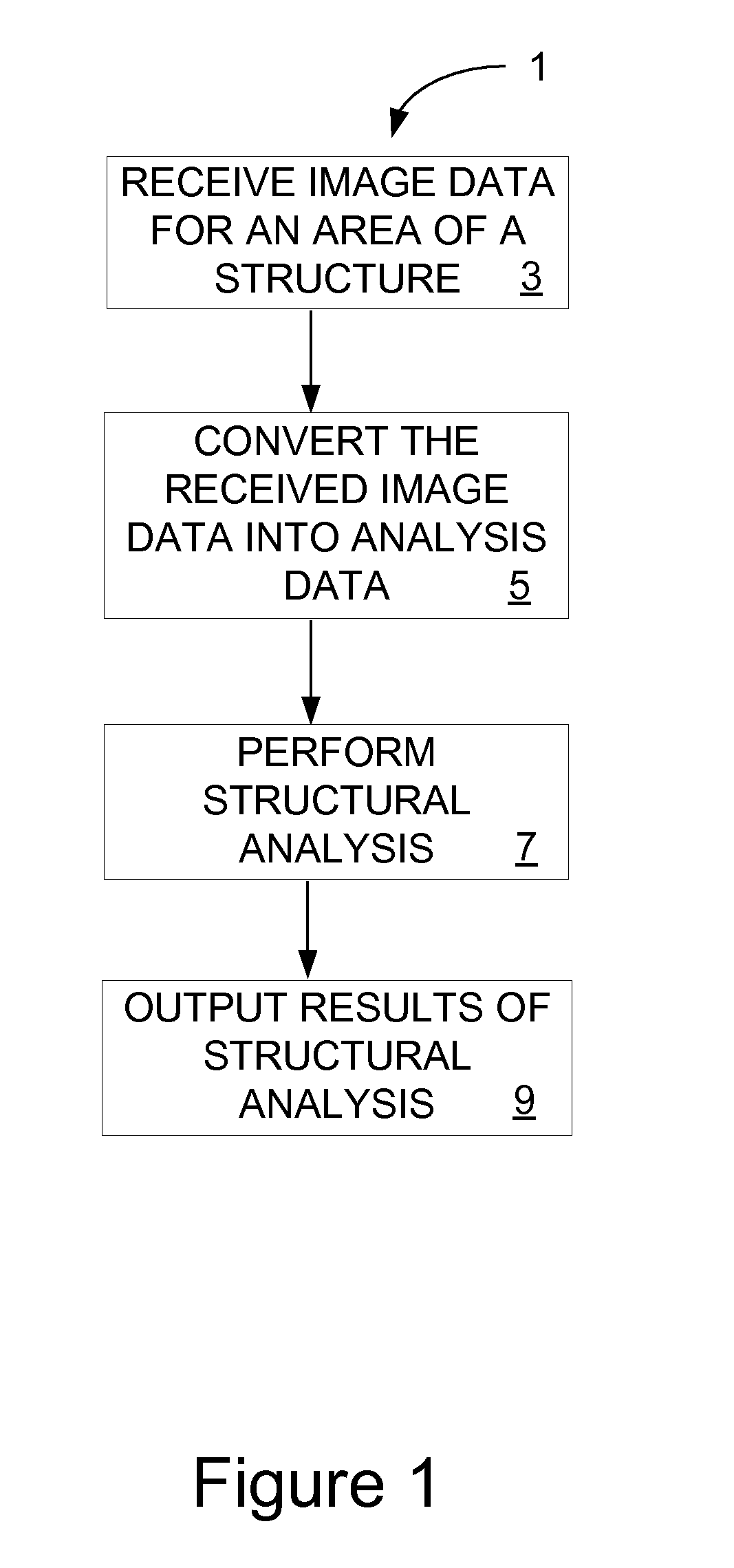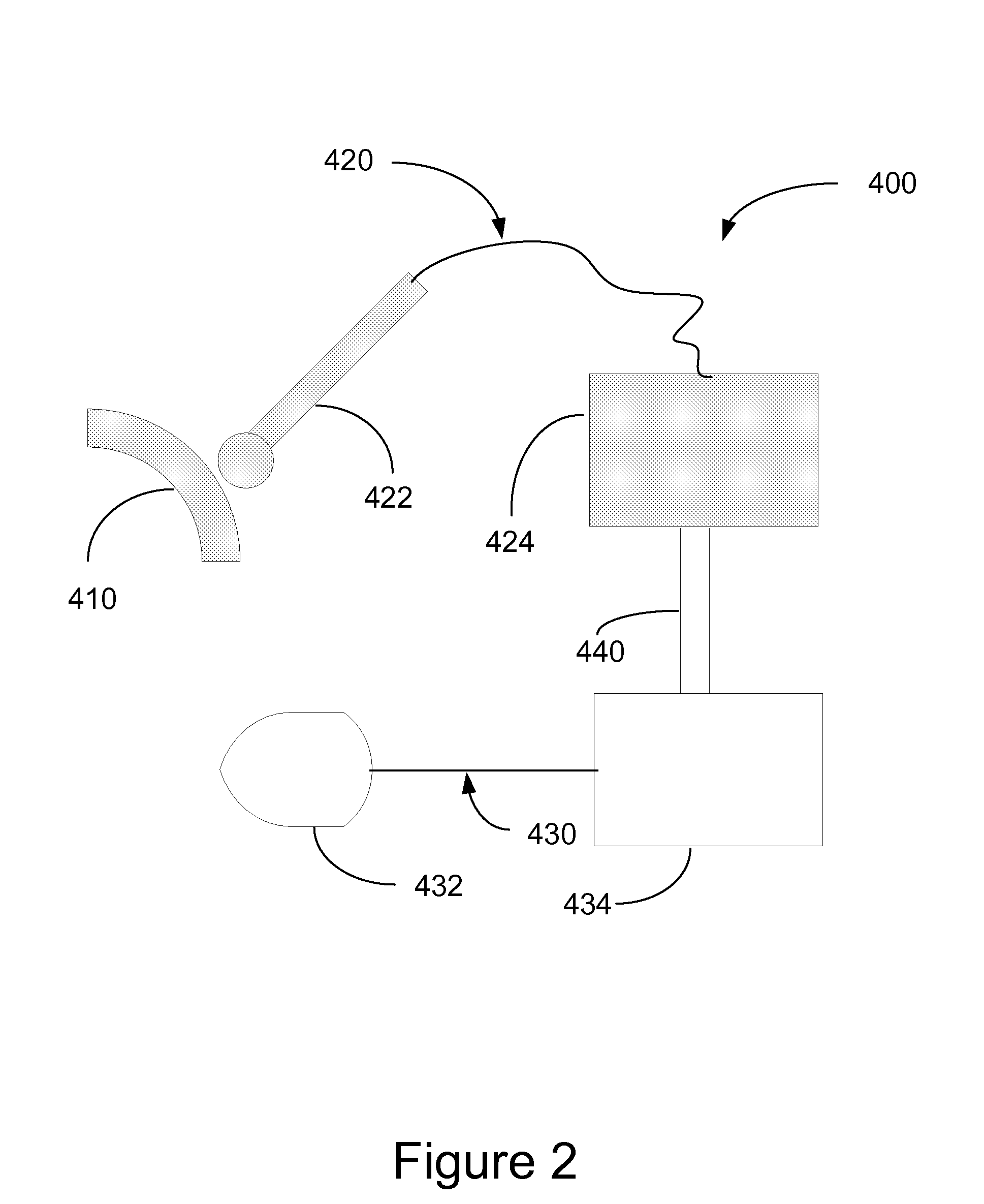Methods and Systems for Automatically Assessing and Reporting Structural Health
a technology of structural health and automatic assessment, applied in the direction of mechanical roughness/irregularity measurement, digital computer details, instruments, etc., can solve the problems of false negatives, over-reporting flaw sizes, and errors in structural health assessment, so as to improve the accuracy of structural inspection and reduce costs.
- Summary
- Abstract
- Description
- Claims
- Application Information
AI Technical Summary
Benefits of technology
Problems solved by technology
Method used
Image
Examples
Embodiment Construction
[0026]Automated assessment of inspection system data has the potential to increase the probability of detection for non-destructive inspection (NDI) systems, which in turn may enable modification of allowable damage limits (flaw sizes) and thereby reduce the design weight of structures designed for damage tolerance. Automated assessment of NDI data may provide benefits to any industry that uses NDI data, for example the construction and repair of: airplanes, cars, trains, buildings, bridges, pressure vessels, ships, etc.
[0027]The potential also exists to reduce inspection costs through automated assessment of structural health. The automated assessment may be made possible (in part) by the use of in-situ sensing systems. When compared to off-board sensors, in-situ sensors are not subject to variation due to manual operation of a sensing element. Automated assessment is intended to improve over manual interpretation by improving probability of detection, reducing false positives and ...
PUM
 Login to View More
Login to View More Abstract
Description
Claims
Application Information
 Login to View More
Login to View More - R&D
- Intellectual Property
- Life Sciences
- Materials
- Tech Scout
- Unparalleled Data Quality
- Higher Quality Content
- 60% Fewer Hallucinations
Browse by: Latest US Patents, China's latest patents, Technical Efficacy Thesaurus, Application Domain, Technology Topic, Popular Technical Reports.
© 2025 PatSnap. All rights reserved.Legal|Privacy policy|Modern Slavery Act Transparency Statement|Sitemap|About US| Contact US: help@patsnap.com



